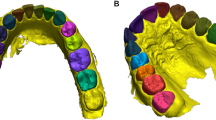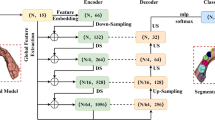Abstract
Aim
To determine cephalometrically the mechanism of the treatment effects of non‐extraction and multiloop edgewise archwire (MEAW) technique on postpeak Class II Division 1 patients.
Methodology
In this retrospective study, 16 postpeak Class II Division 1 patients successfully corrected using a non‐extraction and MEAW technique were cephalometrically evaluated and compared with 16 matched control subjects treated using an extraction technique. Using CorelDRAW® software, standardized digital cephalograms pre‐ and post‐active treatments were traced and a reference grid was set up. The superimpositions were based on the cranial base, the mandibular and the maxilla regions,and skeletal and dental changes were measured. Changes following treatment were evaluated using the paired‐sample t‐test. Student's t‐test for unpaired samples was used to assess the differences in changes between the MEAW and the extraction control groups.
Results
The correction of the molar relationships comprised 54% skeletal change (mainly the advancement of the mandible) and 46% dental change. Correction of the anterior teeth relationships comprised 30% skeletal change and 70% dental change.
Conclusion
The MEAW technique can produce the desired vertical and sagittal movement of the tooth segment and then effectively stimulate mandibular advancement by utilizing the residual growth potential of the condyle.
Similar content being viewed by others
Article PDF
Author information
Authors and Affiliations
Corresponding author
Rights and permissions
About this article
Cite this article
Liu, J., Zou, L., Zhao, Z. et al. Successful Treatment of Postpeak Stage Patients with Class II Division 1 Malocclusion Using Non‐extraction and Multiloop Edgewise Archwire Therapy: A Report on 16 Cases. Int J Oral Sci 1, 207–216 (2009). https://doi.org/10.4248/IJOS09019
Received:
Revised:
Accepted:
Published:
Issue date:
DOI: https://doi.org/10.4248/IJOS09019
Keywords
This article is cited by
-
Multiloop edgewise archwire technique and denture frame analysis: a systematic review
Head & Face Medicine (2020)
-
Class II division 2 adult orthodontic treatment
international journal of stomatology & occlusion medicine (2012)



